See another side to London at eight of its most unusual tourist attractions
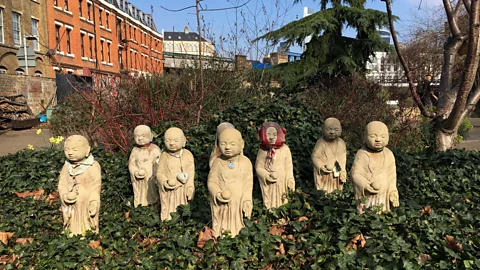 Shafik Meghji
Shafik MeghjiFrom an ancient underground temple at London Mithraeum to the poignant Crossbones Graveyard, these eight offbeat sites will take you to parts of London you likely never knew existed.
London is one of the most touristed cities on the planet: before the pandemic, it welcomed more than 21 million international visitors a year, plus many others from across the UK. The quintessential sights – from the Houses of Parliament to Buckingham Palace, the British Museum to Kew Gardens, to name just a few – are immediately familiar to people around the world, even those who have never set foot in the city.
But if you scratch beneath the surface you'll find the capital is also home to an array of lesser-known places that are rather more surprising, offbeat, under-appreciated, unlikely and – in some cases – downright bizarre.
Here, we veer off London's well-trodden tourist trail to highlight eight of its most intriguing attractions, from an ancient subterranean temple to an odd curiosity shop to a neon fever dream.
 Richard Baker/Getty Images
Richard Baker/Getty Images1. Best for dinophiles: The Crystal Palace dinosaurs
Stalking the woodlands and patrolling the waterways of a South London park, the Crystal Palace dinosaurs were the first of their kind in the world. Created in the 1850s, these life-sized replicas quickly became a major attraction and were credited with sparking a bout of "dinomania" amongst the British public.

The SpeciaList
South Londoner Shafik Meghji is an award-winning journalist and author who enjoys exploring the capital's unexpected sites and stories.
It later became apparent that the statues were not entirely accurate: palaeontology was a fledgling science in the mid-19th Century and the team behind the "dinosaur court" had only limited fossil records from which to work.
Nevertheless, the Hylaeosaurus, Iguanodons and their fellow prehistoric colleagues remain much loved in this part of south London. In recent years, the statues have started to show their age, but repairs started in 2021, with the massive Megalosaurus given an "emergency facelift" after its snout broke off.
The dinosaurs are not the only unexpected creatures to be found in the park, which was created in the 1850s to house the relocated Crystal Palace, an extravagant glass-and-iron structure that originally hosted the 1851 Great Exhibition in Hyde Park. The vast building was destroyed in a fire in 1936, but six terracotta-red sphinxes that once guarded its terraces survived and have recently been restored.
TIP: The Friends of Crystal Palace Dinosaurs group runs Heritage Open Day events and tours in September.
Website: cpdinosaurs.org
Address: Crystal Palace Park, Thicket Road, SE19 2GA
Instagram: @cpdinosaurs/
 The Postal Museum/Miles Willis
The Postal Museum/Miles Willis2. Best for train lovers: The Mail Rail
For more than 75 years, the Mail Rail was a vital, if rarely seen, cog in London's communication network. Launched in 1927 in an effort to avoid the city centre's notorious street-level congestion, the small train was a miniature, passenger-free counterpart to the London Underground, whisking letters, parcels and postcards around a 6.5-mile-long, 70ft-deep route that linked Royal Mail sorting offices in the East and West ends of London, as well as Liverpool Street railway station.
The Mail Rail made its final delivery in 2003, but a section of it has since been opened to the public as part of the Postal Museum, which is next to the Mount Pleasant sorting office in Clerkenwell. Here, you can squeeze yourself into narrow carriages for short rides through the winding tunnels. Along the way you pass a graveyard of abandoned engines and banks of sandbags once used to halt runaway trains while learning about the Mail Rail's tumultuous history (which features bombing raids during World War Two), as well as Hollywood star Bruce Willis (who shot scenes here from his 1991 action film Hudson Hawk).
TIP: There are monthly guided walking tours of the Mail Rail tunnels – contact the museum for the latest dates.
Website: postalmuseum.org
Neighbourhood: Clerkenwell
Address: 15-20 Phoenix Place, WC1X 0DA
Phone number: 0300 030 0700
Instagram: @thepostalmuseum/
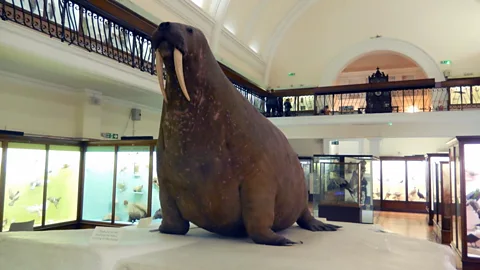 Shafik Meghji
Shafik Meghji3. Best for those with eclectic tastes: Horniman Museum and Gardens
Towering totem poles and colourful cycle-rickshaws, Spanish Inquisition torture chairs and Uzbek wedding dresses, Rio carnival costumes and Yoruba divination rattles, sperm whale teeth and stuffed three-toed sloths: the Horniman has perhaps the most eclectic collection of any museum in the capital.
Founded in 1890 by Frederick Horniman, a wealthy tea trader, social reformer and Liberal Party MP who gathered countless pieces of art, artefacts and specimens from across the globe, it aimed to "bring the world to [the London district of] Forest Hill".
Today, the Horniman has around 350,000 exhibits and, commendably, the curators make efforts to address the colonial connections of many of the items on display. There are internationally important ethnographic, musical instrument and natural history collections. The latter features an array of animal skeletons, replicas and taxidermy, including the museum's most famous resident: the Horniman Walrus, an over-stuffed, unnaturally smooth creature perched on top of a model iceberg in the centre of the gallery.
There's also an aquarium, butterfly house and "animal walk" with alpacas, rabbits and sheep, while the surrounding gardens feature rare and endangered flowering plants from the North America prairies and South African grasslands. You can even find "living fossils" – plant species that have survived for millennia. Most of the Horniman is free to enter, but you have to pay visit the aquarium, butterfly house and some temporary exhibitions.
Website: horniman.ac.uk
Neighbourhood: Forest Hill
Address: 100 London Rd, SE23 3PQ
Instagram: @hornimanmuseumgardens/
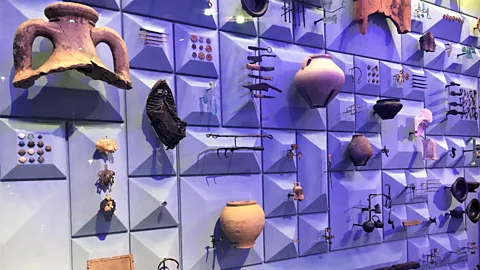 Shafik Meghji
Shafik Meghji4. Best for lovers of history: London Mithraeum
The City of London, the historic financial district of the capital, is often associated with profitable bull markets, but it was once a place of mythical bull slayers. Around 240 CE, some two centuries after the Romans founded the settlement of Londinium, a subterranean temple dedicated to a mysterious god named Mithras was built alongside the (now-covered over) River Wallbrook. Dark and windowless, it represented the cave in which the deity – a heroic figure wearing a distinctive conical hat – is said to have killed a mighty bull.
Little is known about the Mithras cult, whose followers included merchants, administrators and soldiers, and the temple (called Mithraeum) was lost for almost 2,000 years until its remains were unearthed in 1954 during construction work. It was a landmark archaeological discovery and generated huge public interest.
The reconstructed Mithraeum is now located close to its original site beneath the Bloomberg building, across from Cannon Street station. As hordes of office workers hurry past at street level, visitors descend 7m below ground, where an evocative sound-and-light show illuminates the temple and its rituals, while a collection of Roman artefacts – from potsherds to animal bones – found during the excavation provide a glimpse of 3rd-Century Londinium.
TIP: Entry to the London Mithraeum is free but tickets should be booked in advance via the website.
Website: londonmithraeum.com
Neighbourhood: City of London
Address: 12 Wallbrook, EC4N 8AA
Phone number: 0207 330 7500
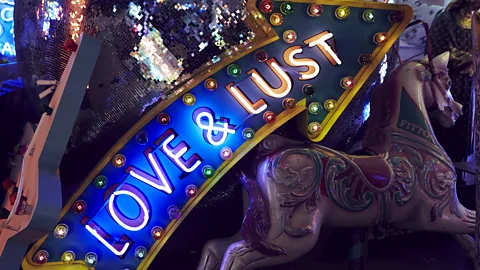 Phil Dunlop
Phil Dunlop5. Best for a sensory experience: God's Own Junkyard
Stepping into God's Own Junkyard – home to one of the world's biggest collections of neon lights and signs – feels like being bounced around a giant pinball machine. Located on an industrial estate in Walthamstow, surrounded by a craft brewery, mechanic and furniture workshop, this sensory overload of an art gallery and shop was founded in the 1980s by the late Chris Bracey, who created pieces for Hollywood films such as Batman and Eyes Wide Shut, as well as the likes of Turner Prize-winning artist Martin Creed and photographer and director David LaChappelle.
The walls are covered with neon signs in vivid pinks, blues, greens, yellows and countless other colours advertising hotels and strip clubs, cocktails and Coca-Cola. Some have enigmatic slogans such as "It's always your favourite sins that do you in", while others depict the logos for BBC1 music show Top of the Pops and the London Underground. There are plenty of playful juxtapositions – a Statue of Liberty wields a lightsaber, while a glowing halo adorns the Virgin Mary – as well as a cafe-bar named The Rolling Scones that serves fry ups and cream teas to a soundtrack of rock and '80s pop.
Website: godsownjunkyard.co.uk
Address: Unit 12, Ravenswood Industrial Estate, Shernhall St, E17 9HQ
Phone number: 020 8521 8066
Instagram: @godsownjunkyard/
 Shafik Meghji
Shafik Meghji6. Best for horror aficionados: The Viktor Wynd Museum of Curiosities, Fine Art & Natural History
The Viktor Wynd Museum of Curiosities, Fine Art & Natural History is not for everyone. A menagerie of animal heads and skeletons – zebras, puffer fish, sabre-toothed cats – protrude from the walls and dangle from the ceiling as you enter the street-level absinthe bar. You then descend a spiral staircase into a house of horrors or, depending on your sensibilities, wonders.
Tight and claustrophobic, the basement is lined with cabinets filled with objects that are by turns gruesome, macabre, baffling and bizarre. Many of them also turn the stomach of all but the hardiest visitor: a wax model of a scabies mite, a botfly larvae inside a horse's stomach preserved in a jar, a one-handed toddler mannequin, long locks of human hair. They sit alongside playful frivolities such as "unicorn's tail" and a "magic teacup". There is also a series of obscure books – including The Art of Faking Exhibition Poultry and The History and Social Influence of the Potato, as well as others that are rather more adult in nature.
In short, it's a place that you'll either love or hate. For anyone in the former camp, the museum offers taxidermy classes and items for sale, too.
TIP: Due to the X-rated nature of some of the exhibits, under-18s are only allowed in with a parent/guardian.
Website: thelasttuesdaysociety.org/museum/
Address: 11 Mare Street, E8 4RP
Phone number: 020 853 35297
Instagram: @thelasttuesdaysociety/
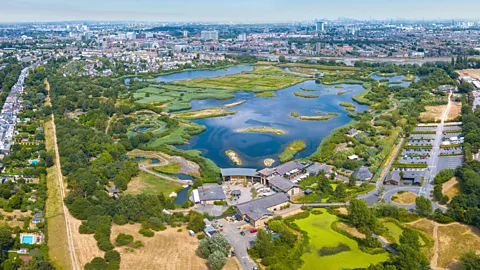 Wildfowl and Wetland Trust
Wildfowl and Wetland Trust7. Best for a breath of fresh air: London Wetland Centre
London is a city that feels as if it is in a constant state of flux. Home to some nine million people, it is hectic and ever-expanding, with new buildings, towers, complexes and quarters springing up on what seems like a daily basis. The capital is not the kind of place that you would expect to find a nature reserve whose abundant birdlife has earned it the designation as a Site of Special Scientific Interest.
Located just 5.5 miles from the bustle of Trafalgar Square, the London Wetland Centre is an unexpected urban oasis, created in 2000 from a set of four abandoned Victorian reservoirs in the south-west neighbourhood of Barnes. Managed by conservation charity the Wildfowl and Wetlands Trust, it spans more than 100 acres of lakes, meadows, ponds and marshland. These habitats play host to a staggering 180 bird species across the course of a year, including lapwings, reed warblers, sandpipers and kingfishers. As you navigate its network of trails and series of observation hides, you may also come across wetland reptiles and mammals such as frogs, lizards and even – with a bit of luck – an elusive water vole.
Website: wwt.org.uk/wetland-centres/london/
Address: Queen Elizabeth Walk, SW13 9WT
Instagram: @wwtworldwide/
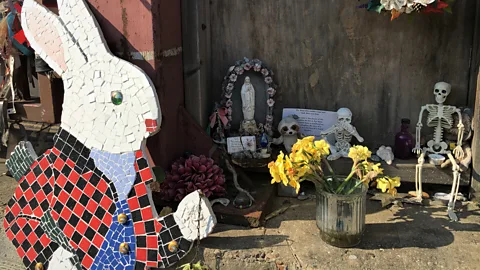 Shafik Meghji
Shafik Meghji8. Best for quiet contemplation: Crossbones Graveyard
On a quiet side street in the shadow of the Shard, a five-minute walk from the tourist throngs in Borough Market, the Crossbones Graveyard sits on the site of a post-medieval burial ground estimated to contain the remains of around 15,000 paupers, many of them sex workers and children. Once surrounded by one of London's most notorious slums, an area know as the Mint, the burial ground was used for centuries before eventually closing in 1853. It was largely forgotten until the 1990s, when bones and skulls were discovered by construction workers digging tunnels for the Jubilee line extension of the London Underground.
There was subsequently a local campaign that led to the transformation of what had become a derelict industrial site into a peaceful garden of remembrance that aims to both honour the "outcast dead" buried below it and provide a contemplative space for present-day visitors. Amid the flower beds, trees and ponds, there is an array of shrines, memorials and tributes to lost loved ones – from twists of coloured fabric and fragments of poetry to statues and sculptures. Vigils to "remember the outcast, dead and alive" are also held at 19:00 on the 23rd of each month.
TIP: Plan your visit as the Crossbones Graveyard is only open 12:00-14:00 Wednesday to Friday.
BBC Travel's The SpeciaList is a series of guides to popular and emerging destinations around the world, as seen through the eyes of local experts and tastemakers.
---
Join more than three million BBC Travel fans by liking us on Facebook, or follow us on Twitter and Instagram.
If you liked this story, sign up for The Essential List newsletter – a handpicked selection of features, videos and can't-miss news delivered to your inbox every Friday.
